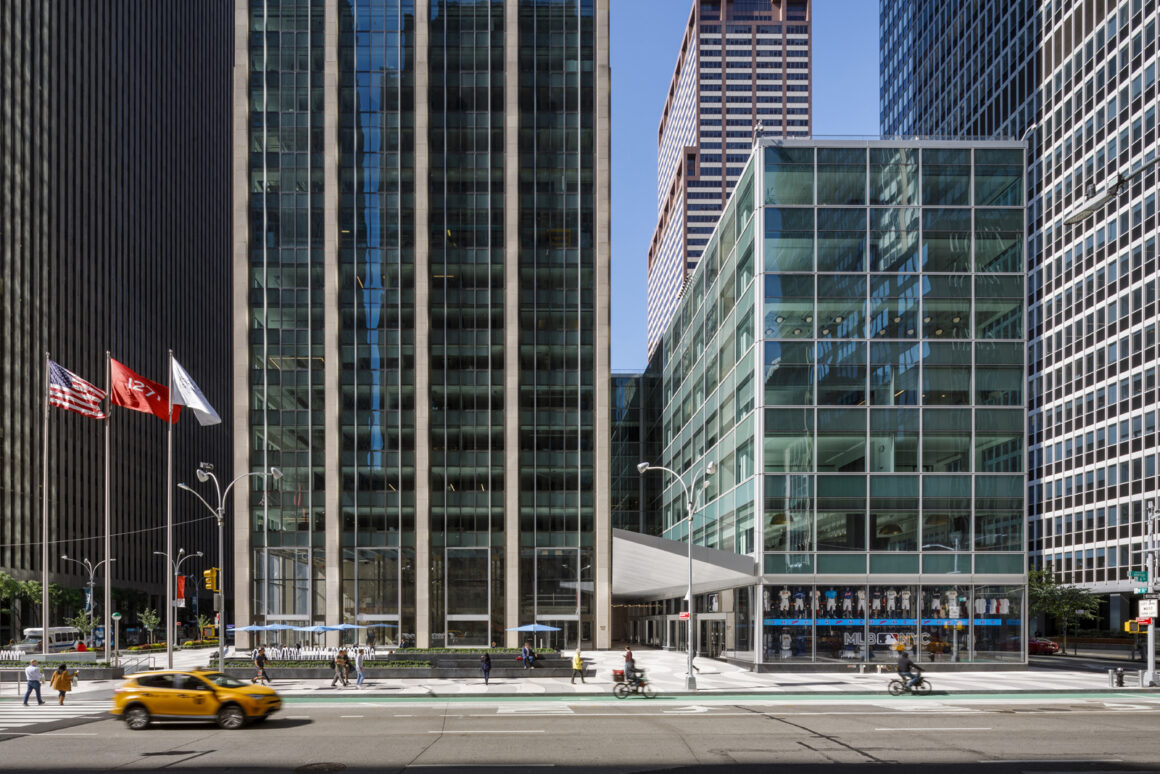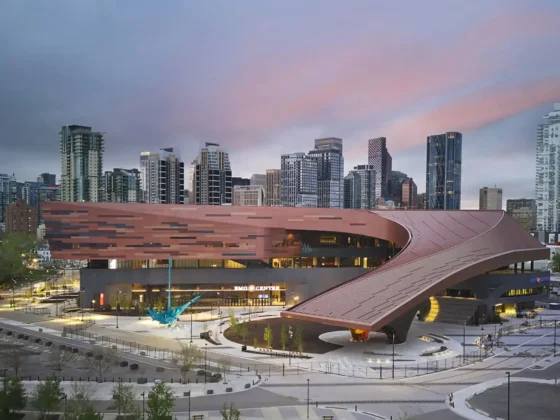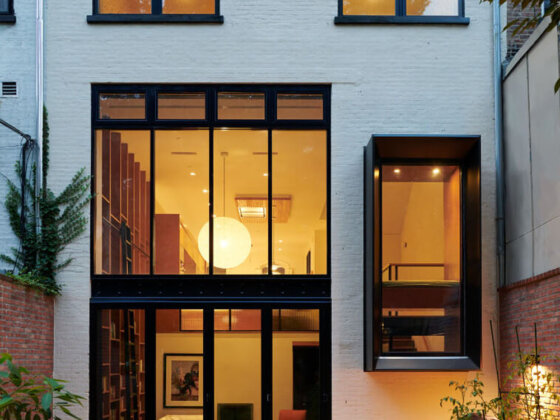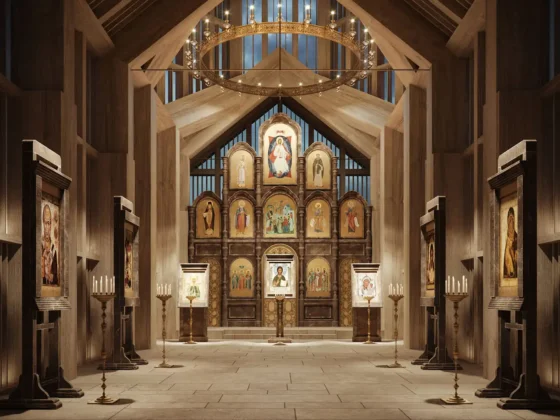New York, New York, USA
Led by architects Jay L. Berman, Yvonne Szeto, Katherine Bojsza, and Christopher Jend of Pei Cobb Freed & Partners, 1271 Avenue of the Americas Recladding and Repositioning called for not only replacement of the facade but restoration and expansion of the landmarked lobby, improvement of the public plaza, modernization of the elevators, and substantial upgrades to the MEP, security, and fire-suppression systems: essentially five separate projects unfolding in parallel.
For its ground-breaking renovation design, the project has been awarded a 2021 American Architecture Award from The Chicago Athenaeum and The European Centre for Architecture Art Design and Urban Studies.

The transformation of the east plaza opens the building toward the avenue and creates a more inviting and human-scaled public space. The fountain, which had originally blocked access to the tower storefront, was reimagined as a stepped landscape feature with seating, seasonal plantings, and five fountain pools.
The signature Copacabana paving pattern, recreated in a more durable custom decorative concrete, was extended to the curb, creating a single expansive public space.
Evoking the dynamic cantilevered entrance canopies on the 50th Street side, a new canopy extends nearly 100 feet toward Avenue of the Americas, announcing the reopened breezeway
and defining the north edge of the plaza while sheltering the retail entrances.

As the building’s iconic identity is one of its most important assets, preserving and enhancing that identity was a primary goal. The design retains the character of the main tower facade, the essential organization of the lower register, and the configuration of the 50th Street entrance canopies.
The tower’s limestone piers were cleaned and repaired but remain otherwise unaltered, with the enclosure replacement occurring between columns. The design of the six-story wraparound podium enclosure introduces a double-wide window module to increase the sense of light and view from offices on lower floors.
Respecting the rhythm of the existing limestone piers, silver fins, and bronze mullions, the design reverses the proportion of spandrel to vision glass, thereby maintaining the architectural module of the original facade while increasing the vision glass by more than 50 percent.
The new unitized, thermally broken curtain wall features a double-glazed IGU with high-performance low-E coating, contributing to an energy savings of 28.5 percent over the code baseline and 41 percent over the existing building.
The expansive sidewalk along 50th Street, anchored by restored canopies and new street trees with large planter beds, serves as a welcoming main entry.
The Copacabana paving pattern extends seamlessly into the expanded lobby, while oversized IGUs with ultra-clear, low-iron double glazing provide maximum visual transparency into the lobby, creating the perception of a single unified public space. The lobby, a designated landmark, has been scrupulously restored and expanded to accommodate new reception desks capable of serving a multi-tenant configuration.
The original breezeway has been reopened, reconnecting the lobby with the plaza and avenue beyond. Originally a narrow corridor between the elevators and 50th Street retail spaces—and later altered to create a lounge area that obscured the interior’s distinctive finishes—the south
lobby has been fully opened.
Its checkerboard stainless steel panels and marble wall cladding have been restored, its damaged terrazzo replaced, and its glass ceiling renewed and fitted with sprinklers.
Such finishes restore the lobby to its mid-century grandeur while satisfying landmark requirements. Large murals by Fritz Glarner and Josef Albers have been painstakingly conserved and restored to their original vibrancy.


The concourse level includes a new bicycle room for more than 200 bikes with a repair station and private changing rooms with showers.
An upgraded subway entrance, integrated with the design of the plaza’s new stepped landscape feature, includes fountains, planters, custom-patterned fritted-glass cladding, granite stair treads with an integrated snow-melt system, and illuminated stainless steel handrails.
Finally, modernized elevators feature new cab interiors clad in opaque matte-white glass, echoing the white marble of the lobby walls; stainless steel wall panels morph into a V-shape, evoking the iconic 50th Street entrance canopies. A full mechanical upgrade and new destination-dispatch technology have greatly improved the elevators’ efficiency.

Project: 1271 Avenue of the Americas Recladding and Repositioning
Architects: Pei Cobb Freed & Partners Architects LLP.
Lead Architects: Jay L. Berman, Yvonne Szeto, Katherine Bojsza, and Christopher Jend
Client: The Rockefeller Group Development Corporation
General Contractor: Turner Construction Company
Photographers: Albert Vecerka/Esto Esto Photographics Inc.














